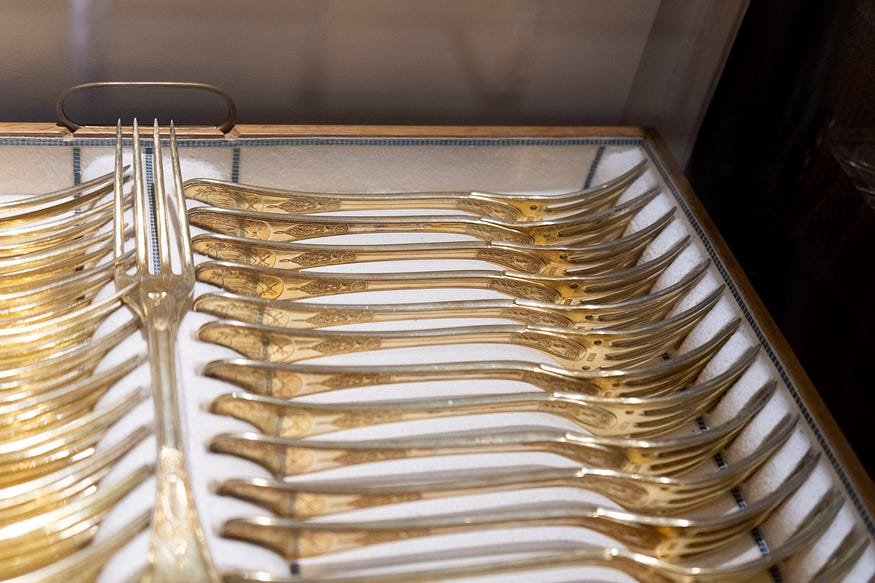Unveiling the Hidden Stories

Our daily lives are filled with objects that we often take for granted.
From the moment we wake up until we go to bed, we interact with a multitude of items that enhance our comfort, convenience, and overall well-being.
But have you ever wondered about the fascinating stories behind these everyday items?
In this article, we will delve into the intriguing history and surprising facts about some of the most commonly used objects in our lives.
Get ready to be amazed as we unveil the hidden stories behind these everyday essentials.
1. The Remarkable Evolution of Glasses
When we think of glasses, we usually envision the modern frames that sit comfortably on our faces.
But did you know that glasses have a history dating back to the 13th century?
The invention of glasses can be traced back to the Italians in the 1200s, who crafted frames that fit on the face. However, these early glasses did not have temples or arms to hold them in place.

It was the Spanish who later added ribbons to the frames, allowing them to stay securely on the face. Over the centuries, glasses have undergone significant advancements, with the introduction of various lens types, styles, and materials.
Today, glasses are not only a functional accessory but also a fashion statement.
2. The Surprising Origins of Yellow Pencils
Have you ever wondered why most pencils are yellow?
The answer lies in the historical significance of the color yellow in China. Back in the 1890s, pencil manufacturers wanted to distinguish their products and show that they used high-quality graphite from China.

In Chinese culture, yellow represents royalty and was associated with the emperor. By making their pencils yellow, manufacturers created a visual connection to China and implied that their products were of superior quality.
This clever marketing strategy turned yellow pencils into a symbol of excellence and prestige.
3. The Timeless Duo: Salt and Pepper
Salt and pepper are ubiquitous condiments found on dining tables worldwide. But have you ever wondered why these two spices have become inseparable companions?
The history of salt dates back to ancient times when it was a valuable and essential commodity. Before the invention of refrigeration, salt was used to preserve food and add flavor.

Pepper, on the other hand, was once a luxury spice that only the rich could afford. It was prized for its exotic flavor and was even used as a form of currency.
Over time, salt and pepper became the two most commonly used spices, and their presence on the dining table became a symbol of hospitality and completeness.
4. The Caloric Power of a Gallon of Gas
Gasoline is a crucial fuel that powers our vehicles and machinery.
But did you know that a gallon of gas contains a significant amount of calories?
In a surprising comparison, scientists have found that the energy contained in one gallon of gasoline is equivalent to the energy required for a human being to cycle approximately 912 miles.

This astonishing fact highlights the incredible energy density of gasoline and its efficiency as a fuel source. So next time you fill up your tank, remember the tremendous power contained within that gallon of gas.
5. The Devil’s Tool: The Fork’s Controversial Past
The fork, a seemingly innocent utensil, has a dark and controversial history. In medieval times, the fork was seen as immoral, unhygienic, and even a tool of the devil.

The first dining forks were used by the ruling class in the Middle East and the Byzantine Empire.
However, when Maria Argyropoulina, a Byzantine princess, introduced forks to Venice in the 11th century, it sparked outrage and condemnation from the church.
Many believed that using a fork to bring food to the mouth was an act of defiance against God’s creation of hands. It took several centuries for the fork to gain acceptance and become a common utensil in households worldwide.
6. The Evolution of Toothbrushes
The toothbrush, an essential tool for oral hygiene, has come a long way since its humble origins.
In ancient times, people used various materials such as twigs, bones, and feathers to clean their teeth. It was in the 1400s that the modern toothbrush as we know it today was invented.

A Chinese innovator attached stiff boar bristles to a bamboo handle, revolutionizing dental hygiene. This design remained popular until the introduction of nylon bristles in 1938, which offered improved durability and hygiene. Today, toothbrushes come in various shapes, sizes, and designs, catering to individual preferences and dental needs.
7. The Accidental Discovery of Erasers
Erasing mistakes with ease is a convenience we often take for granted. But did you know that the first erasers were invented by accident?
In the 18th century, an English engineer stumbled upon the erasing property of rubber. Mistaking it for a slice of bread, he used the rubber to remove pencil marks from his paper.

This accidental discovery led to the development of erasers as we know them today. Before rubber erasers, people used damp bread or other makeshift materials to erase pencil marks.
The invention of rubber erasers revolutionized the writing and drawing experience, allowing for easy correction and revision.
8. The Rise of Toasters
Toasters have become a staple in households around the world, providing us with perfectly toasted bread slices for breakfast or a quick snack. However, the popularity of toasters didn’t take off immediately after their invention in 1905.

It was the introduction of pre-sliced bread in 1933 that revolutionized the toaster industry. Pre-sliced bread made it much more convenient and efficient to toast bread, leading to a surge in toaster sales.
Today, toasters come in various shapes and sizes, offering features like multiple toasting settings and even built-in bagel toasting capabilities.
9. The Zippy Story of Zippers
Zippers may seem like a mundane everyday item, but their history is anything but ordinary. Originally known as “Hookless Fasteners,” zippers were initially used on boots by the B.F. Goodrich company in 1923.

The name “zipper” came about because of the sound they made when being closed or opened. Zippers faced initial resistance due to concerns about their moral implications, as they were associated with closing bags containing tobacco and making it easier to remove one’s pants.
However, over time, zippers gained widespread acceptance and became an essential fastening tool in clothing, bags, and various other applications.
10. The Intricate Origins of Playing Cards
Playing cards have been a source of entertainment for centuries, but their origin is shrouded in mystery.
The first known playing cards can be traced back to 9th century China, where they were the size of dominoes. Card games became popular in China as a meditative and social activity.

From China, playing cards traveled along the Silk Road, eventually reaching Europe, where they ignited a frenzy for the game. Today, playing cards come in various designs and are enjoyed by people of all ages worldwide.
At the End
Everyday items that we often take for granted have fascinating histories and stories to tell. From the evolution of glasses to the controversial past of the fork, these objects have shaped our daily lives in ways we may never have imagined.
By delving into the origins and surprising facts behind these items, we gain a deeper appreciation for the comfort, convenience, and innovation they bring to our homes and lives.
So the next time you reach for your glasses, use a fork, or toast your bread, remember the incredible journey these everyday items have taken to become essential parts of our modern existence.

